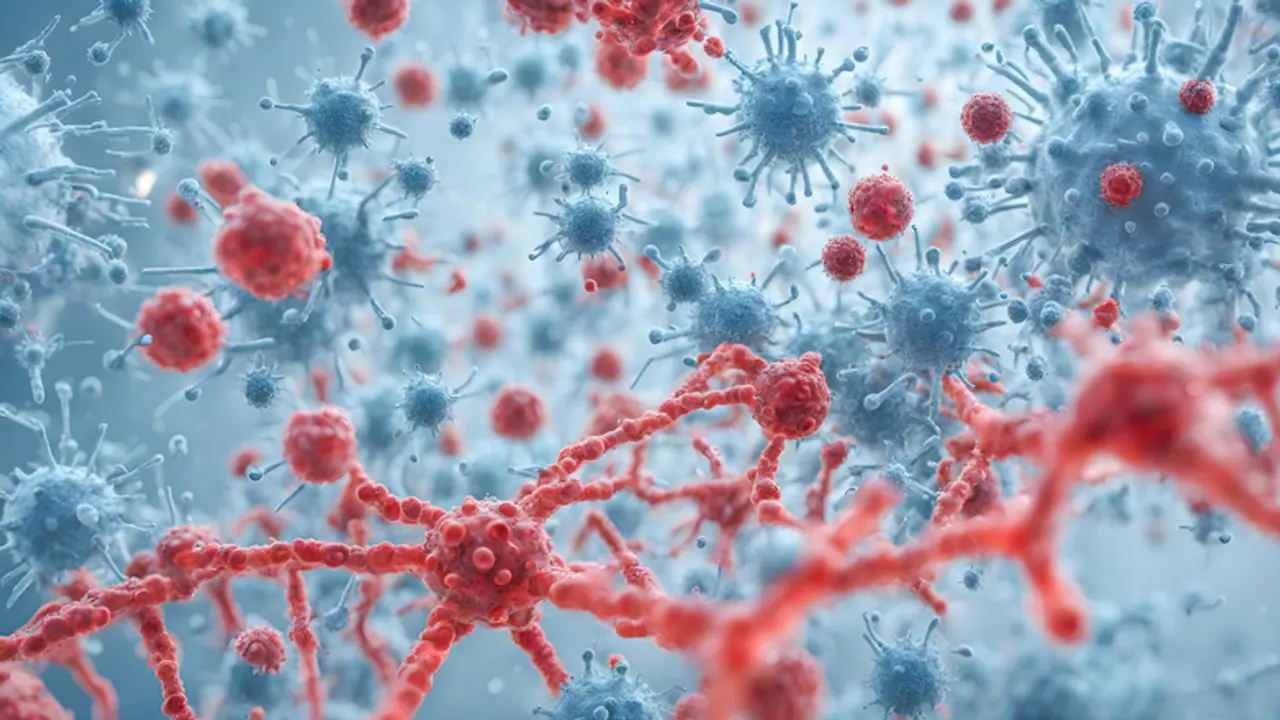Scientists at the University of Virginia have discovered a new organelle in human cells called the hemifusome. It may play a role in protein recycling and disposal and could be linked to diseases like Alzheimer’s.
In a major scientific discovery, researchers have found a brand-new organelle inside human cells. They have named it the hemifusome. This tiny structure might help with sorting and recycling proteins in our cells.

A new organelle is discovered in human cells
The research was led by Seham Ebrahim, an assistant professor at the University of Virginia. Her team spotted the hemifusome while using advanced imaging tools to study the inside of human cells.
What are organelles?
Organelles are small parts within cells that perform special functions, just like how organs work in the human body. For example, mitochondria are often called the powerhouse of the cell because they produce energy.
The newly discovered hemifusome may become the latest addition to this list of important cell parts, says Live Science report.
A strange new shape appears
Ebrahim’s team was studying filaments, which help cells keep their shape. While doing this, they noticed a strange shape that kept appearing in their 3D images. At first, they thought it was just a mistake or error in the image.
But as they looked more closely, they realised this strange shape was a real structure. It appeared in many cells and had the same size and form each time. Ebrahim described it as looking like a snowman wearing a scarf—with a small round top, a bigger bottom, and a thin line between them.
How was the hemifusome found?
The discovery was made using a special imaging method called cryo-electron tomography (cryo-ET). This technique freezes cells quickly and allows scientists to see them in 3D, in their natural state, without chemical stains or dyes.
Because cryo-ET keeps the cell's internal parts undamaged, it can show details that other techniques miss. Ebrahim said that older methods may have destroyed or blurred this tiny organelle, making it invisible in past studies.
Why is it called 'hemifusome'?
Inside cells, there are balloon-like parts called vesicles. These carry things like proteins and hormones. The scientists saw two vesicles partially fused together. They were separated by a special two-layer membrane.
This partial fusion had never been seen in a living cell before, though scientists had predicted such a thing might exist. The name “hemifusome” comes from “hemifusion”, which means a partial merging of two membrane layers.
Could the hemifusome be important?
Yes, it could be. Ebrahim believes this new organelle plays a role in sorting and disposing of old or unneeded cell material. This is important because if waste builds up, it can damage cells.
Although scientists are still learning about the hemifusome’s exact job, it might be a key part of cell cleanup systems. It may even help prevent problems like the buildup of proteins in brain diseases.
Link to Alzheimer's and other diseases
One possible future use of this discovery is in Alzheimer’s research. Alzheimer’s disease happens in part because the brain can’t remove abnormal protein build-up properly.
If hemifusomes are involved in recycling and waste removal, learning more about them could help us understand how this disease and others begin, and how they might be treated.
Not just a one-time observation
Some scientists might ask if this new structure is real or just a mistake from the imaging tool. But experts say the hemifusome is not a result of freezing or error. It was seen in different cells and under different conditions, making it a solid finding.
Right now, we know that the hemifusome exists, but there is still a lot to learn. Scientists don’t yet know its full life cycle, exact structure, or full function. Ebrahim thinks it could be the first step in forming certain types of vesicles.
She also believes it could be the key to stopping harmful buildup inside cells, something very important for long-term health.
A new chapter in cell biology
This finding shows how much we still don’t know about what’s inside our cells. Ebrahim believes there are many more hidden structures waiting to be found. Thanks to new tools like cryo-ET, the tiny world inside our cells is becoming clearer every day.
"Without cryo-electron tomography, we would have missed this discovery,” Ebrahim said. “There’s probably a whole world out there that we still have to find."


